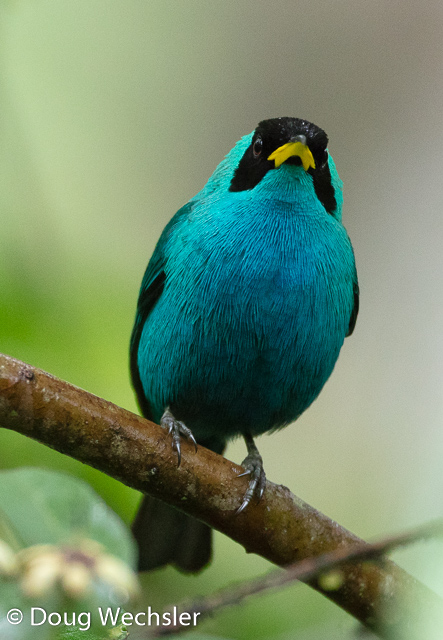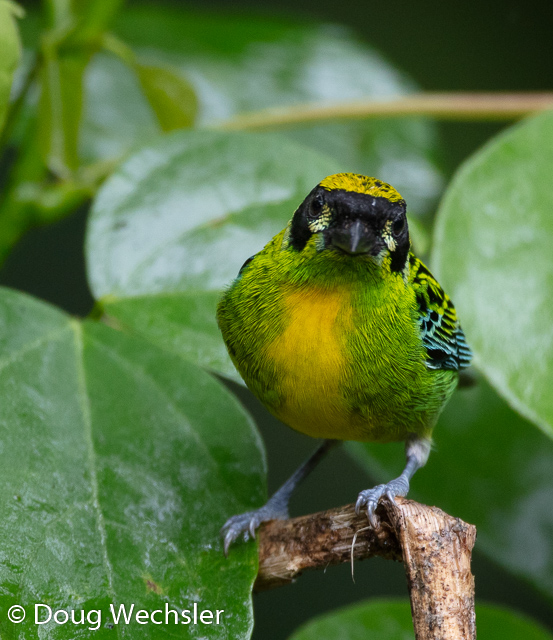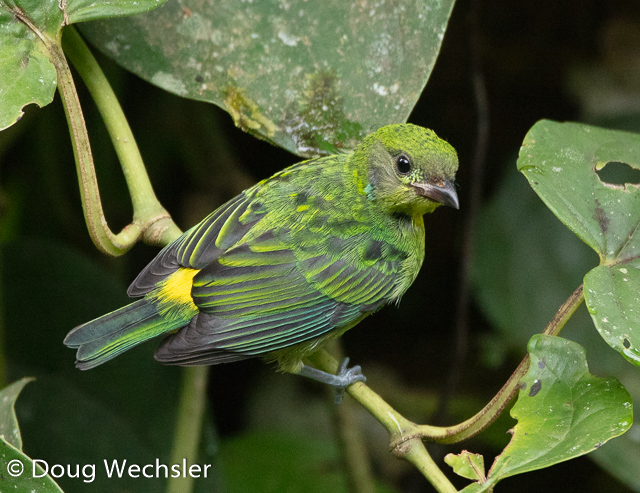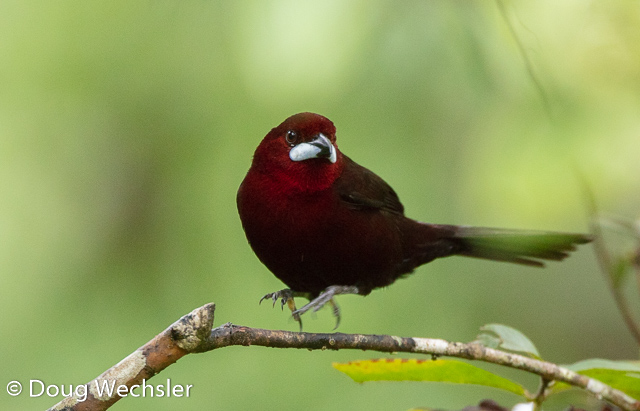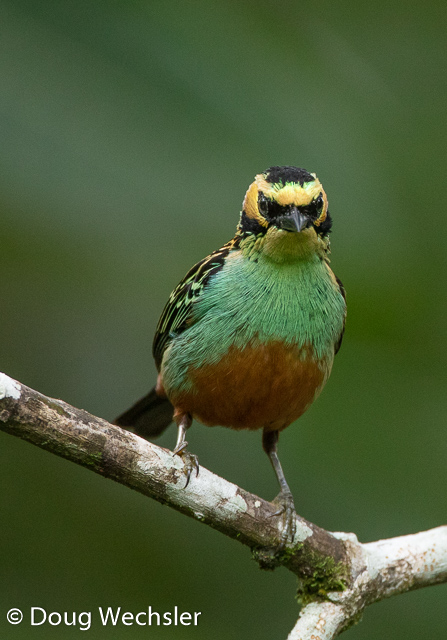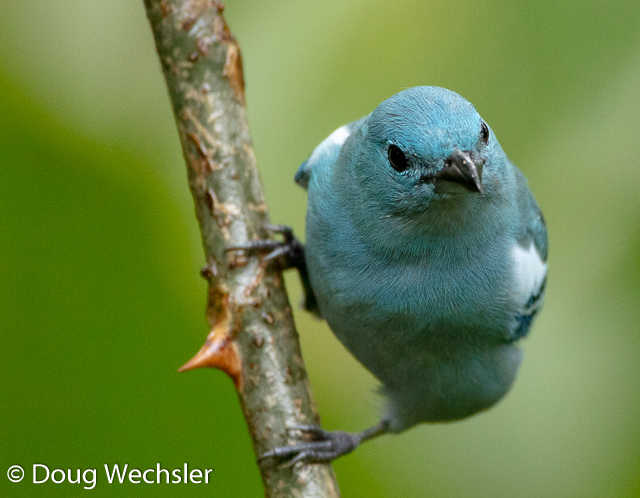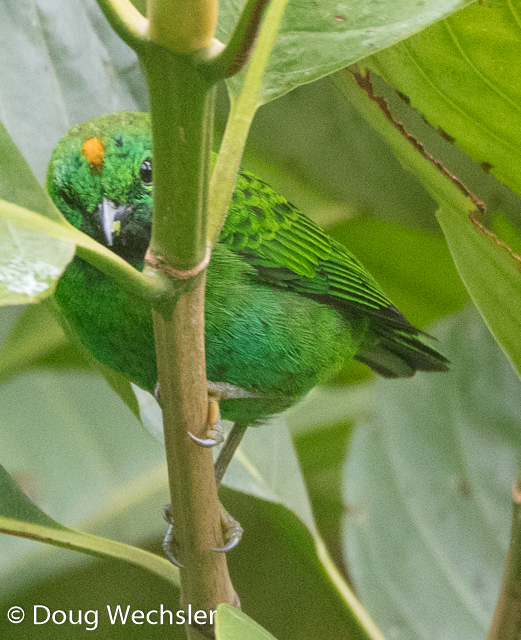Tanagers are an easy group to face in the tropics. Most display colorful and distinctive patterns that make them easy to ID. However, their markings can repeat certain themes, so it can still take some concentration to identify them. Copalinga Reserve of the Jocotoco Conservation Foundation is a great place to stare a wide variety of tanagers in the eye.
Green Honeycreeper is an odd name for a turquoise bird, but then again the female is all green.
Green-and-gold Tanagers inhabit the mid-story and canopy of lower elevation montane forests on the east slope of the Andes.
Juvenile tanagers can be tricky to identify, but this one is close enough in pattern to the adult (Green-and-gold Tanager) to ID easily when well-seen.
The velvet-hued Silver-beaked Tanager is a common bird of second-growth across the Amazon Basin.
Golden-eared Tanagers frequent mid-levels of the forest, but will come down close to the ground to feed on fruit.
Among the most widespread of the tanagers, the Blue-gray Tanager is common at Copalinga. Unlike their western counterparts, members of this species east of the Andes have white patches near the bend of the wing.
Search in mixed canopy flocks to spot an Orange-eared Tanager. A hillside perch with an eye-level view of the tree tops is the best place to look.
Euphonias used to be placed with the tanagers, but taxonomists kicked them out of the family after molecular studies showed that they are actually finches in the family Fringillidae. I include it here as a nostalgic memory of its past affiliation and because I like the photo.

